Hesperian Health Guides
Prevention of Polio
| POLIO VACCINE, the best protection – IF it has been kept cold continuously! |  |
- Vaccinate babies with polio vaccine, usually oral poliovirus vaccine (OPV). Give this vaccine at birth, 6 weeks, 10 weeks, and 14 weeks of age, though your country may follow a different schedule. Children are usually given one dose of inactivated poliovirus vaccine (IPV) by injection at the same time as their fourth dose of OPV. Often they get OPV at the same time as the DPT vaccine.
- Vaccinate as many children as possible. The vaccine given by mouth is alive. So, if most of the children are vaccinated, the live vaccine will spread to children who have not been vaccinated, and protect them also.
- Try to keep the polio vaccine very cold (2° to 8°C). It must be kept cold or it will spoil.

- Seek community help with vaccination and in keeping vaccines cold. Sometimes vaccines do not reach villages because health posts lack refrigeration. But often storekeepers and a few families have refrigerators. Win their interest and cooperation.
- To give best protection, vaccinate the child when she does not have a fever over 38°C or diarrhea. But if she is just a little sick it is OK to give the polio vaccine. It is more important to give the complete series of vaccinations than to miss them because the child is sick.
It is estimated that in poor countries at least one-third of vaccines are spoiled by the time they reach the children. Therefore, even in children who have been vaccinated, additional precautions are needed:
BREAST MILK PROTECTS AGAINST INFECTIONS — INCLUDING POLIO

- Breastfeed your baby as long as possible. Breast milk contains antibodies that may help protect against polio. (Babies rarely get polio before 8 months old because they still have their mothers’ antibodies. Breastfeeding may make this protection last longer.)

- Organize the people and help out in popular campaigns to encourage vaccination and breastfeeding. Community theater and puppet shows are good ways to raise awareness on these issues. See Chapter 48.
A BOY WITH POLIO BECOMES AN OUTSTANDING HEALTH
AND REHABILITATION WORKER
Marcelo Acevedo had polio as a child and this caused paralysis of his legs. He and his family lived in a village 2 days from the closest road. Village health workers from Project Piaxtla helped Marcelo get surgery for his knee contractures. After surgery he got braces and went to school. Then they trained him as a village health worker, and he returned to serve his village.
| Marcelo at age 4, sitting with his older brother who was injured when a tree fell on his leg. | 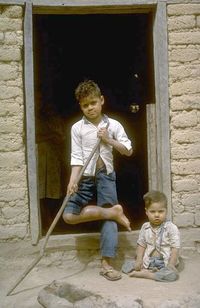 |
Marcelo training at Project Piaxtla. | 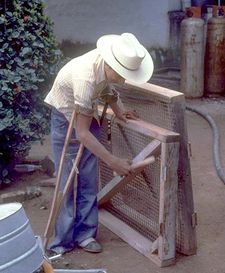 |
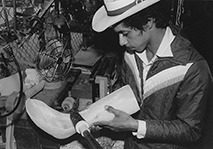 |
When PROJIMO was formed, Marcelo joined as a village rehabilitation worker. He studied brace-making as an apprentice in 2 brace shops in Mexico City. |
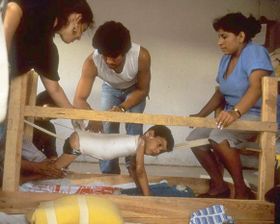 |
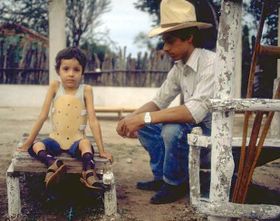 |
| Marcelo and other villagers make a plaster body mold of a young boy’s chest. The child had polio and has a severe curve in his spine. | With his plastic body brace, made by Marcelo, the child can sit much straighter. |
| Marcelo is now one of the leaders in PROJIMO, and has gained the respect of the whole village. He has recently married a woman from the village. | |


